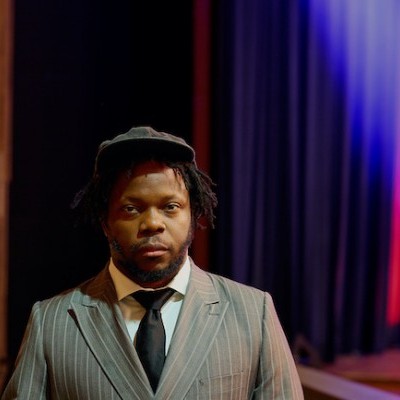Apr 2, 2024 12:59 PM
Saxophonist, Sonic Explorer Casey Benjamin Dies at 45
Casey Benjamin, the alto saxophonist, vocalist, keyboardist and producer who stamped his distinctive sounds on the…
Tenor saxophonist Johnny Griffin, whose large Chicago tenor sound and diminutive stature gave him the nickname “Little Giant,” died Friday, according to his agent, Helene Manfredi. The cause of death was unknown. He was 80.
Griffin was scheduled to perform with organist Rhoda Scott, saxophonist Olivier Temime and drummer Julie Saury. He died at home in Mauprevoir, the French village where he lived for the past 18 years.
When Griffin studied at Chicago’s Du Sable High School, the famous band director Capt. Walter Dyett told the diminutive musician he had to play alto saxophone because he was too small to play tenor. When Griffin got his first big call—to play with band leader Lionel Hampton, in 1945—he brought his alto. Little did he know he was taking the tenor saxophone chair, and, not only that, his dueling partner in the band was the enormous “Texas tenor” Arnett Cobb.
Perhaps it was this early, competitive cauldron that sparked Griffin to become a competitive, racehorse improviser; whatever it was, Griffin soon earned the nickname, “fastest tenor in the West.”
Griffin was born April 24, 1928, in Chicago, and began studying clarinet in 1941. After his stint with Hamp, he worked on the East Coast with an r&b band led by Joe Morris, and with a variety of other players, including both of the drumming Joneses—Philly Joe and Jo—Percy Heath and Gene Ramey. He also hung out extensively with Thelonious Monk and Bud Powell during this period, absorbing their musical ideas. In 1957, after a a stretch in the Army, Griffin joined Art Blakey and the Jazz Messengers, then replaced John Coltrane in Monk’s group in 1958. For two years, he led a “tough tenors” quintet with Eddie “Lockjaw” Davis. In 1963 Griffin moved to Europe, settling first in Paris, then the Netherlands and finally in Southern France. In Paris, Griffin performed at the Blue Note with other expatriates, including Bud Powell and Kenny Clarke; and from 1967-‘69 he was a soloist in the Clarke-Boland Big Band.
One of the last surviving artists who appears on the famous “Great Day In Harlem” photo, Griffin attacked standards, particularly war-horses such as “All the Things You Are” with ferocious strings of ideas. He had a warm, round, personal and well-seasoned sound. In his later years, he became as accomplished on ballads as uptempo numbers.

Benjamin possessed a fluid, round sound on the alto saxophone, and he was often most recognizable by the layers of electronic effects that he put onto the instrument.
Apr 2, 2024 12:59 PM
Casey Benjamin, the alto saxophonist, vocalist, keyboardist and producer who stamped his distinctive sounds on the…

Albert “Tootie” Heath (1935–2024) followed in the tradition of drummer Kenny Clarke, his idol.
Apr 5, 2024 10:28 AM
Albert “Tootie” Heath, a drummer of impeccable taste and time who was the youngest of three jazz-legend brothers…

“Both of us are quite grounded in the craft, the tradition and the harmonic sense,” Rosenwinkel said of his experience playing with Allen. “Yet I felt we shared something mystical as well.”
Mar 12, 2024 11:42 AM
“There are a few musicians you hear where, as somebody once said, the molecules in the room change. Geri was one of…

Henry Threadgill performs with Zooid at Big Ears in Knoxville, Tennessee.
Apr 9, 2024 11:30 AM
Big Ears, the annual four-day music celebration that first took place in 2009 in Knoxville, Tennessee, could well be…

“I’m also at a point in my life where I don’t feel like I have anything to prove, like at all,” Akinmusire says about his art.
Mar 26, 2024 12:45 PM
At the risk of oversimplifying and romanticizing the story, Ambrose Akinmusire came bursting on the jazz scene at the…